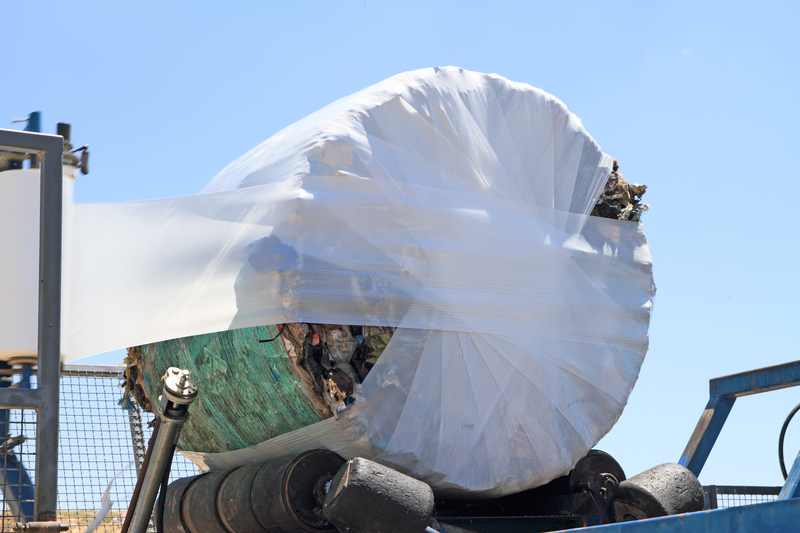Waste Reduction in Offices: Strategies to Achieve a Green Workspace
Workplaces around the world generate an enormous amount of waste every day, ranging from paper and plastics to electronic equipment and food scraps. As the focus on sustainability grows, organizations are realizing the importance of creating environmentally-friendly offices. Embracing waste reduction in offices is not just a trend--it's a vital step towards ensuring a healthier planet and more responsible business operations.
In this comprehensive guide, we'll explore strategies for reducing waste in the workplace, highlight the benefits of a green office, and provide actionable steps to help you achieve a reducing office waste environment. Whether you are a facilities manager, a business owner, or an office employee, these insights will empower you to make impactful changes.
Why Reducing Office Waste Matters
The average office worker generates about 2 pounds of waste each day, much of it recyclable or compostable. From environmental impact to cost savings and employee engagement, the benefits of office waste reduction are numerous:
- Environmental Conservation: Reducing waste conserves natural resources, minimizes pollution, and decreases landfill use.
- Cost Efficiency: Waste reduction in the office lowers disposal costs and saves money on materials and supplies.
- Corporate Social Responsibility: Publicly demonstrating green initiatives strengthens your company's reputation and shows a commitment to sustainability.
- Regulatory Compliance: Many regions have laws or incentives for organizations that reduce their environmental impact.
- Positive Workplace Culture: Employees are increasingly motivated by working for environmentally responsible organizations.

Common Sources of Office Waste
Understanding the main contributors to office waste is crucial for tailoring your waste reduction strategies. Common sources include:
- Paper and documents (printing, copying, junk mail, packaging)
- Packaging materials (cardboard, plastic wrappers, bubble wrap)
- Food waste (lunch leftovers, coffee grounds, disposable cutlery)
- Electronics (e-waste) (outdated computers, cables, printers)
- Plastic bottles and cups
- Stationery supplies (pens, markers, folders)
Comprehensive Strategies to Achieve a Green Workspace
Adopting effective methods for reducing waste in the office requires both holistic planning and persistent implementation. Below are key strategies to start or expand your green office initiatives:
1. Conduct a Waste Audit
Before implementing any changes, understand your baseline.
- Track what types and quantities of waste are generated weekly.
- Identify areas with the most potential for improvement (e.g., paper usage, disposable kitchenware, etc.).
- *Involve staff in the process to raise awareness and build buy-in.*
2. Adopt a Paperless Office Policy
One of the largest contributors to office waste is paper. By going digital, organizations can drastically reduce waste:
- Switch to digital documentation: Use cloud storage, e-signatures, and digital workflow tools like Google Workspace or Microsoft Teams.
- Encourage double-sided printing only when strictly necessary.
- Unsubscribe from unnecessary mailings and opt for electronic bills and receipts.
- Share meeting agendas and notes via email or intranet instead of printing them.
3. Set Up Recycling and Composting Stations
Facilitate proper disposal with clearly labeled, centralized bins for recyclables, compostables, and landfill waste.
- Place clearly marked bins in convenient, high-traffic locations.
- Educate employees about what can and can't be recycled.
- Compost food scraps from the kitchen or breakroom.
- Partner with reputable recycling vendors for e-waste and toner cartridges.
4. Reduce Single-Use Plastics
Single-use plastics are a major environmental threat. Eliminate or substitute them with sustainable alternatives:
- Provide reusable mugs, bottles, and dishware in the office kitchen.
- Ban or discourage plastic cups, utensils, and plates.
- Choose suppliers that use eco-friendly packaging.
- *Encourage employees to bring their own lunchboxes and containers*.
5. Embrace Green Procurement Policies
An often-overlooked source of office waste starts at the procurement stage. Choose suppliers and products designed with sustainability in mind:
- Purchase recyclable, biodegradable, or sustainably produced office supplies.
- Buy in bulk to minimize packaging waste.
- Prefer suppliers offering take-back or recycling programs for used products.
- Select energy-efficient and durable equipment to reduce electronic waste.
6. Establish a Reuse and Donation Program
Instead of discarding surplus furniture, electronics, or supplies, consider reuse and donation:
- Set up an internal sharing platform for unused office supplies.
- Donate usable furniture, computers, or supplies to local charities or schools.
- Repurpose materials in creative ways (for instance, using scrap paper for notes).
7. Rethink Office Kitchen and Catering Practices
Food and beverage services frequently generate waste in the form of packaging, leftovers, and disposables. Reduce kitchen waste by:
- Stocking reusable cups, plates, and cutlery.
- Encouraging bulk purchases of snacks instead of single-serve items.
- Providing clear guidelines for composting food scraps.
- Choosing local or organic catering--and donate or compost leftovers.
8. Cultivate Employee Engagement and Training
A greener workplace is most successful when everyone is on board. Foster a culture of sustainability with these steps:
- Host regular workshops or lunch-and-learns about waste reduction and sustainable office practices.
- Empower a "Green Team" to lead initiatives and monitor progress.
- Recognize and reward staff who make special efforts to reduce waste.
- Keep communication open--post updates, results, and tips around the office and intranet.
9. Monitor, Measure, and Report Progress
Track your office's waste reduction journey to see what's working and where you can improve:
- Measure waste volumes regularly (monthly or quarterly).
- Use key performance indicators (KPIs) such as paper consumption per employee, recycling rate, or total waste diverted from landfill.
- Share your achievements with staff and stakeholders to maintain motivation.
- Continuously update your waste reduction plan with new ideas and feedback.
Innovative Technologies for Waste Reduction in Workspaces
Modern offices can leverage technology to further their waste reduction goals. Consider adopting the following:
- Smart Bin Sensors: Automatically sort and track waste to optimize recycling and collection schedules.
- Document Management Systems: Facilitate secure, cloud-based storage and collaboration, further reducing paper usage.
- Automated Procurement Tools: Prevent over-ordering by tracking inventory and predicting needs more accurately.
- Energy Monitoring Devices: Optimize energy usage, extending the life of office equipment and minimizing disposal needs.
Case Study: How Sustainable Offices Redefine Success
Businesses across various industries are setting examples with successful office waste reduction initiatives:
- Tech Giants: Companies like Google and Apple have achieved near zero waste at many of their campuses by implementing aggressive recycling and composting programs.
- Law Firms: Many are shifting to digital document storage and e-signatures, cutting annual paper use by tens of thousands of sheets.
- Small Businesses: By joining local green business programs, neighborhood companies collaborate on shared collection and bulk purchasing, reducing waste and costs.
Overcoming Challenges in Office Waste Reduction
Transitioning to an eco-friendly office is not without hurdles. Common barriers and solutions include:
- Resistance to Change: Address by educating staff on benefits and involving them in the solution process.
- Knowledge Gaps: Provide training, resources, and clear guidelines for recycling and waste disposal.
- Initial Costs: Highlight long-term savings and look for grants or incentives for sustainable upgrades.
- Limited Infrastructure: Work with building management to improve recycling systems, or partner with local green services.

Long-Term Benefits of Waste Reduction in Offices
Consistent waste reduction yields long-lasting positive outcomes for both organizations and the environment:
- Financial Savings--Reduced supply expenses and lower waste disposal fees contribute to your bottom line.
- Reduced Carbon Footprint--Minimizing landfill waste and conserving resources reduces greenhouse gas emissions.
- Enhanced Brand Reputation--A proven commitment to sustainability attracts clients, talent, and investors.
- Healthier Workspaces--Cleaner, less cluttered environments support employee well-being and productivity.
Conclusion: Making Green Offices the New Standard
By implementing diverse office waste reduction strategies, companies of all sizes can foster a culture of sustainability, accountability, and efficiency. Establishing a green workspace isn't just the responsible choice for the environment; it's also a smart business practice that delivers competitive and cultural benefits.
Involve every level of your organization, stay informed on new developments in green office practices, and continually seek innovative ways to reduce, reuse, and recycle. With sustained efforts, your office can lead the way in waste reduction--helping to shape a cleaner, greener future for all.
Ready to get started? Begin with a simple waste audit, build buy-in, set measurable goals, and watch your office's transformation into a truly sustainable workspace.